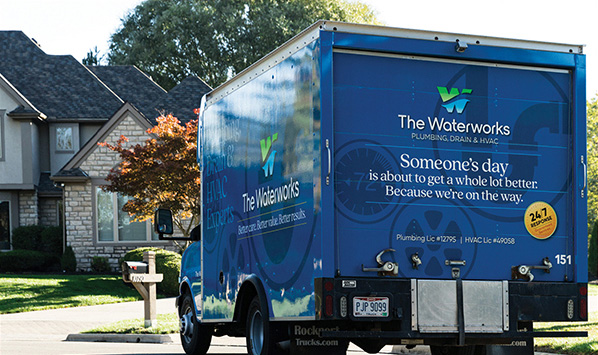
Spring forward tips to prep your A/C for warmer weather
It’s the moment we’ve all been waiting for all winter long: Daylight Savings Time. This weekend’s Spring Forward time change marks the first sign of the changing seasons. Now is the time to start thinking about your home’s air conditioning unit! Before the weather heats up, a preseason A/C check-up is a great way for you to identify and, thus, resolve any issues before they become even worse.
You will desire cool comfort during the warm spring and summer days. Performing maintenance on your air conditioning system will ensure reliable operation when you need it the most. With this list of reasons, you can understand why you should pay attention to your A/C system, indoors and outdoors, before the weather changes.
1. When inspecting the outdoor condenser, you should do the following:
Inspect the outdoor unit panels The outdoor unit’s panels are designed to enclose the electrical connections and should be in place to protect the system and you! There are always the possibilities of a misaligned panel or missing one due to changing weather. If you are missing a panel due to wind, or if the panel is misaligned, there are high potential risks for you and the operation of the equipment. If anything appears to be wrong with the outside panels, you should call a qualified technician for an assessment before starting your air conditioning system.
2. Remove any condenser covers, coil blankets, or lids
During the winter months, one can cover the outdoor coil to protect it. Be sure to remove the cover before starting the system. Heat transfer is limited when the coil is protected and insulated by the cover. If you start your system with the cover still on the coil, even for a very short time, your system can become severely damaged. And, this is very common. Every year several people complain of damage caused by the cover and end up needing major repairs or replacement of the entire system.
3. Repair or replace any damaged pipe insulation
The larger copper pipe on the outdoor unit, the suction line, helps supply cool refrigerant back to the compressor in the outdoor unit of your air conditioning system. A loss of required cooling for the outdoor unit, which can damage your system, can be caused by a suction pipe with damaged insulation. You may lose a bunch of energy because of this and cause an increase in your electricity bill. Damage to the foam insulation can be caused by sun rot, freezing water trapped in the foam, or winter animals looking for shelter and food. To maintain proper cooling, the insulation should be intact. If replacing needs to be done, do it before starting the actual unit. A size will be designated on the copper pipe to detail the size of the insulation. Only the larger line needs insulation.
4. Remove any debris from the outdoor coil
Trash or vegetation can be blown into your outdoor coil depending on where you live and what side of the house the system is located. Debris limits the coils’ ability to transfer heat. To achieve the best possible performance, debris should be removed from the coil and the surrounding areas. It is also important to mention when mulching, do not pack too much mulching around the base of the unit to allow for good airflow.
5. When inspecting the indoor air handler unit, make sure to follow these steps.
Change the air filters – After a cold winter, your home’s indoor air filter will likely have gathered a lot more debris and dust than normal and you should replace your filter before the warmer spring and summer seasons.
6. Check the coil drainage hose
This plastic hose is also called the “condensate line.” Because the coil’s temperature is lower than the ambient air, water will condense and drip into the tray underneath. The condensate needs to flow to a drain or the liquid will overflow the tray and flood the unit or even spill water into your basement. It is best to check the line is in the correct place, is attached and the drainage will go to the appropriate location.
7. Clean the supply vents and return grills
It is imperative that the supply and return air grills and vents are open and free of debris! A good idea is to use a vacuum to remove any pet hair or dust that might have piled up during the most recent season. Different homes tend to have different systems. Some houses have separate winter and summer supply grills or what is called “house zoning” and some have two completely separate systems – one for heating and one for cooling. If your home has a system like this, you can place an extra plastic material over the A/C vents to prevent drafts during the cold months. It is also important to remove these plastic covers before you turn on the A/C or severe damage could be caused through improper airflow. An important rule of thumb is to remember to clean all grills at the beginning of each season.
8. Turn it on and make sure it works
After going through this checklist, it is important to turn the system on to make sure it works. You should wait for a warmer day to check the air coming out of the indoor vents for a few minutes and every hour after. After the first few minutes after starting it, you should feel the cool air coming out of the system. However, if the air does not feel cool, something is wrong and you should turn off the system through the thermostat. Go through the list once more and try each step again. If a problem persists, call The Waterworks pro-techs who can diagnose the problem quickly and get your home back in a livable environment.
A simple A/C inspection can keep your system running worry-free during the warmer months and it is especially important for older systems. Take a look and note down any issues to inspect the overall health of your home’s system. The qualified and licensed heating & cooling technicians at The Waterworks can help with this process and provide a home that is comfortable all season long.
Plumbing emergency? We respond any time!





